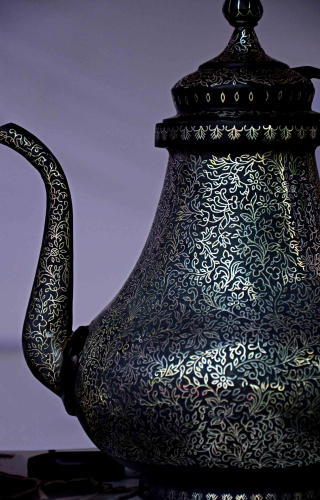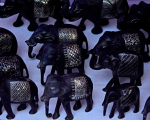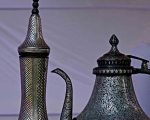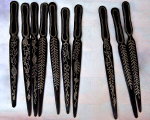This image gallery presents some of the Bidriware objects produced by the artist Anees Ahmed, son of the late Mr. Ghanil Ahmed. The artist learnt the craft of Bidri from his father.
Bidriware is one of the luxury craft products produced in the Deccan. It is known for its black colour which acts as a perfect foil to the flashing silver and flecks of brass which are incised on its surface.
It is cast from an alloy composed of around 90 per cent zinc with smaller amounts of lead, copper and tin. The object is then incised with decorative floral or geometric motifs. The grooves are inlaid with silver and sometimes brass in sheet (taihnishan) or wire (tarkashi) to form a flush surface. The alloy background is then covered with a paste containing sal ammoniac, among other ingredients. The combination is polished together to give it a black sheen.
Some accounts trace Bidri back to a 15th-century trajectory from Persia via Ajmer in north India to the Deccan. Most extant Bidri objects cannot be assigned a date earlier than the second quarter of the 17th century. Patronised by the Deccani sultans, it later received patronage from the Mughals as they conquered the Deccan in the 17th century.
The various categories of early pieces of Bidri are ewers, trays, basins, pan (betel nut) boxes, incense burners, and above all huqqa (water pipe) bases. Floral or geometric motifs are incised on the black surface sheen.
Today, jewellery items such as pendants and bangles are produced for the mass market apart from the luxury items commissioned exclusively earlier.
Source
Alderman, John Robert. 2015. 'Bidri Ware' in Sultans of Deccan India, 1500–1700: Opulence and Fantasy, eds. Navina Najat Haidar and Marika Sardar, pp. 179–94. New York: Metropolitan Museum of Art.
















